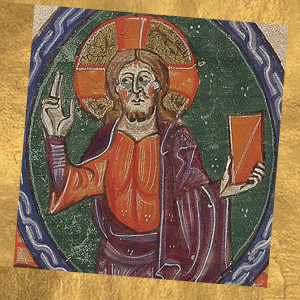Sts. Lorenzo Ruiz and Companions, Martyrs

An ordinary man
Born in Manila in 1594, the half-Chinese, half-Filipino Lorenzo Ruiz grew up an ordinary Catholic. He was educated by Dominicans, served as an altar boy, and became a calligrapher, transcribing documents for a living. He participated in parish life in all the normal ways.
Lorenzo’s family life, too, was ordinary. He married a Filipino woman, Rosario; the couple had three children, and lived the daily life of an unassuming Catholic family, content with their lot. No one would have guessed that the life of this man, who prayed, worked and raised his children just like so many other husbands and fathers, would take an entirely unexpected turn.
Fugitive
Lorenzo’s life was turned upside down by a false accusation, the only record of which we find in the journal of a Dominican priest. The latter wrote that Lorenzo took refuge with the priests Antonio Gonzalez, Guillermo Courtet and Miguel de Aozaraza because “he was sought by the authorities on account of a homicide at which he was present or which was attributed to him.” With the three Dominicans was a Japanese priest, Vincente Shiwozuka de la Cruz, and a Japanese leper named Lazaro. They were about to leave for Japan, and Lorenzo, on the run from the authorities, decided to go with them.
They set sail toward a land where the toil of Portuguese missionaries had born much fruit – only years earlier, the city of Nagasaki had been home to over 50,000 Japanese Christians. But it was also a land of dread, for the Tokugawa shogunate that ruled Japan had begun a persecution of Christians nearly unparalleled in cruelty, filling the land with martyrs and torturing others until they lost their minds.
Fear
Lorenzo and his companions were caught, and the battle with fear began. When interrogated, the men agreed to leave Japan, but this was not enough for the authorities. The shogunate didn’t merely want the missionaries to leave. It wanted to unmake them as Christians, offering them freedom only if they renounced the faith. The group was imprisoned for two years and tortured in clever, horrible ways.
Water was forced down their throats and their abdomens were then pressed with boards to make the water explode out of their noses, mouths and ears. Their bodies were pricked and cut. Worse, there was psychological torture. Fr. Gonzales soon died. Fr. Shiwozuka and Lazaro had a moment when they nearly did renounce Christ in sheer terror, but they soon strengthened each other, drawing courage from each other’s faith.
Lorenzo, too, faced the darkness of fear, when a man’s strength runs out and he looks death in the eye. “I would like to know,” he asked the Japanese interpreter during a particularly horrific session of torture, “if, by apostatizing, they will spare my life.” His interpreter gave no clear answer, but the Spirit of God came to this member of Christ’s Body in agony.
The offering
Somehow, in the midst of that anguish, Lorenzo grew stronger, even bold. Words that did not come from fear were given to him to answer his interrogators. His persecutors were losing in their terrible game, and they knew it. They decided to turn up the pressure, quite literally. The men were tightly bound to slow circulation – except for one arm, with which they could signal their apostasy – and they were hung over pits. Boards were placed around their waists and weighted with stones.
The men hung for three days. It was during that last trial that this ordinary husband and father, filled with the Holy Spirit, uttered the defining words of his life. “I am a Catholic,” he said, “and I wholeheartedly accept death for God. If I had a thousand lives, I would offer them all to Him.” He died in the pit on September 28 or 29, 1637, together with Lazaro. The three priests tortured with them were beheaded. All testified with their deaths to the One who is Life, and who received the offering of their extraordinary, ordinary lives.







